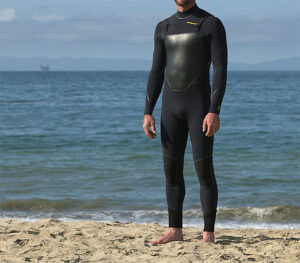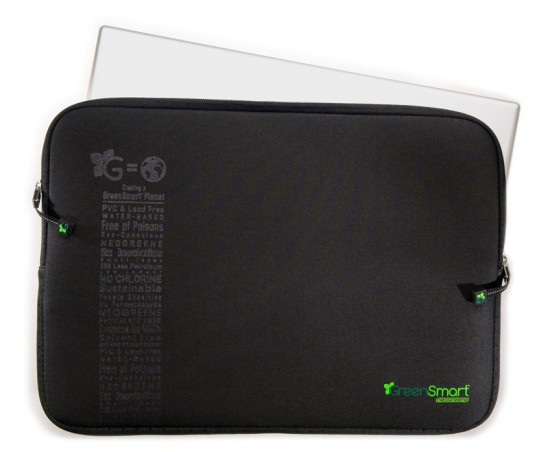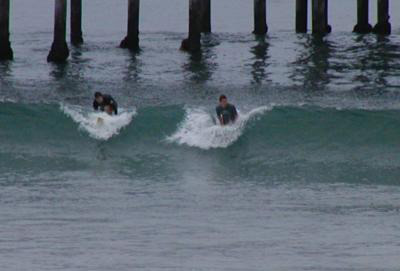 This article (originally posted in 2009) was focused on a product called NeoGreene. While it appears the company producing this greener version of neoprene has since disappeared, it only seems fitting to refocus on other strides in eco-friendly neoprene alternatives.
This article (originally posted in 2009) was focused on a product called NeoGreene. While it appears the company producing this greener version of neoprene has since disappeared, it only seems fitting to refocus on other strides in eco-friendly neoprene alternatives.
Patagonia has expanded their line into a product called Yulex. Sourced from natural rubber that is Forest Stewardship Council® certified by the Rainforest Alliance, they replace the traditionally petroleum-based material with a plant-based insulating material. Natural rubber boasts many superior properties over synthetic rubber, in fact in situations where performance is crucial (condoms, surgeon gloves, airplane tires), natural rubber is king.
 Producing Yulex reduces CO2 emissions by an astounding 80% over energy-intensive traditional neoprene, not to mention the benefits of a responsibly managed forest to source from.
Producing Yulex reduces CO2 emissions by an astounding 80% over energy-intensive traditional neoprene, not to mention the benefits of a responsibly managed forest to source from.
In some ways, it’s about time.
Largely unchanged from the 1950’s (which is an eternity in material science for the fashion industry), Duprene was developed in 1930 by DuPont from crude oil. Rebranded in 1936 as Neoprene, it was first sewn into wetsuits in the early 1950’s and quickly adopted by divers and water-loving sportsman.
(Original Article)
As an avid SCUBA Diver, Surfer and water sports guy, (a few) neoprene wetsuits are a standard for myself, and anyone living above or below the equator.
Neoprene is not the most eco-friendly material out there, even so called ‘green’ neoprene. All neoprene is made from a petroleum or limestone derivative, therefore each suit is a product of either mining or drilling.
It’s not just the neoprene itself that can be environmentally harmful. Very effective as a chemical-resistant material, it is very difficult to adhere and form into products (which is why you commonly see it stitched at seams to hold better). The adhesives used are very toxic and can include VOCs (Volatile Organic Compounds), toluene, formaldehyde and more.
Now a company called GreenSmart has introduced Neogreen, a neoprene-like material made with a water-based chemistry allowing for less toxic adhesives to be used. Currently it is only available for items such as laptop sleeves and bottle cases, but maybe it will someday make its way to wetsuits.
GreenSmart has abandoned the chloroprene chemistry of neoprene entirely and developed a material with all the attributes without the hazards, We call it Neogreene. It is water-based chemistry that allows for water-based adhesives that still provides the squishy and smooth material with a little bit of stretch. Specific to all neoprene, Neogreene uses 25% less electricity and 25% less petroleum to produce.


The Chic Ecologist Himself surfing on a small day in San Diego, CA
Using the limestone base, recycled materials, chlorine-free wool, recycled polyester, PVC-free kneepads and thinner neoprene layers (replaced by merino wool, therefore adding warmth), these really are the most environmentally responsible choice currently on the market. Hopefully, in the near future, there will be new developments in green materials that will someday replace neoprene altogether.
Comments 9
Pingback: Eco-friendly surfboards | The Chic Ecologist
Pingback: Neogreen Insulated Lunch Totes and Kozees | The Chic Ecologist
Pingback: Finisterre UK Surf Clothing | The Chic Ecologist
Hey, thanks for the article! I am researching the topic and I had found Patagonia, and of course they have put some research into this, but my problem is that most people -including manufacturers and designers- don’t even know where their neoprene comes from, what kind it is and if there are “greener”alternatives.
When you are surfing, have you noticed plastic pollution of the ocean?
Author
I have indeed, but nothing quite captures it like this photograph of a surfer in Indonesia

Hello,
I’m starting an upcycle business. I’m at looking for eco-friendly materials to complement my main material. I’ve been looking for ecofriendly neoprene and came up your site. Could I ask you who is your supplier for your Neogreene?
I don’t live by an ocean. But I to would like to make a difference by upcycling what otherwise goes in our land-fields. I want my products to be mostly used materials when possible and the rest, eco friendly.
Best Regards,
Luce
Author
Hi Luce,
That is great! I am not actually a manufacturer, supplier or a retailer, so I cannot help you with that. Unfortunately, it also appears the company that created Neogreene (GreenSmart) is no longer in business either. I wish I could help, but I haven’t yet found a suitable replacement to write about. If you find one, please let me know here in the comments!
Cheers,
-The Chic Ecologist
Pingback: The Surf Industry Paradox – itsjordanbailey